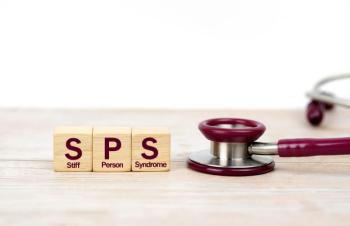
No benefit to late reperfusion in stable MI patients
The practice of late reperfusion-percutaneous coronary intervention (PCI) performed 2 to 28 days after myocardial infarction (MI)-in patients who are stable does not lead to improved clinical outcomes compared with medical therapy, said Judith S. Hochman, MD, lead investigator of the Occluded Artery Trial (OAT).
The practice of late reperfusion-percutaneous coronary intervention (PCI) performed 2 to 28 days after myocardial infarction (MI)-in patients who are stable does not lead to improved clinical outcomes compared with medical therapy, said Judith S. Hochman, MD, lead investigator of the Occluded Artery Trial (OAT).
Whether or not to reperfuse patients arriving late after an MI is controversial, but there is a strong bias in favor of PCI. About 50,000 late PCIs are performed each year in stable patients in the United States, Dr. Hochman estimated. "Of the patients who would be eligible for OAT, about half are getting angioplasty," she said.
OAT enrolled 2,166 patients with a totally occluded infarct artery 2 to 28 days after MI. They were randomized to either PCI plus optimal medical therapy or medical therapy alone. To be eligible, patients could not have significant left main or three-vessel disease, angina at rest, class III or IV heart failure, or other criteria indicating unstable disease.
Compliance with the protocol was good. In the group randomized to PCI, 99% had PCI attempted and 86.6% had successful PCI. In the group randomized to medical therapy alone, only 8.3% crossed over to PCI, said Dr. Hochman, OAT study chair and clinical chief and director of the Cardiovascular Research Center, New York University, New York, N.Y.
The primary end point was a composite of death, repeat MI, or class IV heart failure after an average of 4 years of follow-up. The incidence of the primary end point was 17.2% in the group randomized to PCI versus 15.7% in the group randomized to medical therapy alone, a nonsignificant difference. The results were unchanged when excluding those patients in the medical group who crossed over to PCI. There was also no difference in the primary end point in the patients who received PCI before or after day 7.
There was a trend toward an excess of reinfarction in the group randomized to PCI. The incidence of death or development of severe heart failure was the same with the 2 strategies.
Both groups had the same 4% improvement in ejection fraction. Researchers attributed the improvement in ejection fraction in the medical therapy group to an increase in collateral flow.
Dr. Hochman emphasized that the results of OAT do not apply to patients in the acute phase of MI, who are known to benefit from early reperfusion, or those with unstable disease. "Eighty-two percent of the patients in OAT had single-vessel blockage," she said. "The highest risk patients were excluded."
Newsletter
Get the latest industry news, event updates, and more from Managed healthcare Executive.


















































